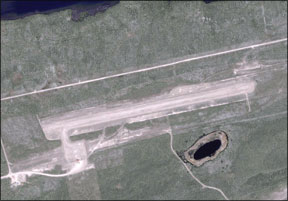Congratulations to Tom Turner on another well-written article (“Instrument Rating: The First 100 Hours,” May 2009). Ive been flying GA aircraft in the IFR system since 1990. The conundrum of flying in real weather when most of the instruction is simulated poses real problems for the newly minted IFR pilot. My advice to the newbie would include a couple of additional recommendations. First, I would recommend a visit to your nearest ARTCC, which I think will clearly illustrate your contract with the controller, and will greatly simplify things. Second, learn your local weather patterns for the four seasons. Third, make up imaginary 288 trips you may need to take and figure out by talking to a briefer and using online weather products how you would complete the flight. Fourth, file an IFR flight plan on every flight beyond the $100 cheeseburger run. Next, make up your own checklists for each aircraft you fly, having a LIFR checklist, a winter IFR checklist, a night checklist, etc. My checklist always starts the day before the flight: Check the progs, charge the handheld back-ups, fire up the 396 to make sure the weather comes up, etc. Lastly, spend some time with people who arent cavalier, but whove done the mission and learn the friendly clouds from the unfriendly. Ask the airport manager who the guys are at the field who fly in the weather. There are always those perfect practice days when its clear above 4000 feet and non-convective, but 800-and-2 on the deck. Get after it and get your wings wet. Thanks for great articles always. Jerome Lamb Via e-mail Good ideas. In addition to your area ARTCC, dont forget the local TRACON or nearby tower. And, just because youre no longer in training doesnt mean you dont need some dual instruction. Picture Perfect I enjoyed Mays article, “Practicing For Emergencies.” It seems there is not enough attention paid to engine failures just after takeoff involving single-engine airplanes. Its best for me not to have to come up with a quick plan when the engine quits at 300 feet AGL taking off for that early morning flight in my J-3 Cub…especially since 288 I only fly my airplane two or three times in a good month. So, I stapled into my homemade checklist (J-3s have no published checklists) a photo I took of the grass strip and its environs. I took the photo from 3000 feet AGL (it took all afternoon to get that high), shooting sort of straight down, so that it has a map-like look. Then, with a new black marker, I drew lines to show fences and wires. The trees are obvious. Now, before I hand-prop the beast, I already have reminded my knuckle head where Im going with minimal turning when the motor quits at 300 feet, whether on takeoff or landing. When I go someplace else, which is almost never, I look over the field on approach for the same stuff. I learned to fly in the USAF and now fly MD-88s for a major carrier. Ive learned that I never was as good as I thought I once was, and Im probably not getting better. I need all the help I can get from cheats like that photo. Youve got to sniff out the gotchas like a hound dog. And that sniffing builds confidence. Martin Giesbrecht Via e-mail Handling the engine failure shortly after takeoff in a single has always been a hot topic in these pages. Weve spent a lot of time advocating against trying to turn back to the airport and, instead, picking the path of least resistance ahead of you. These days, taking photos of an airport can, stupidly, get you an interview with the local constabulary. Even if you arent able to view the airports surrounding area in detail, ask local pilots what they recommend or use the Internet to get a birds-eye view of the options.





